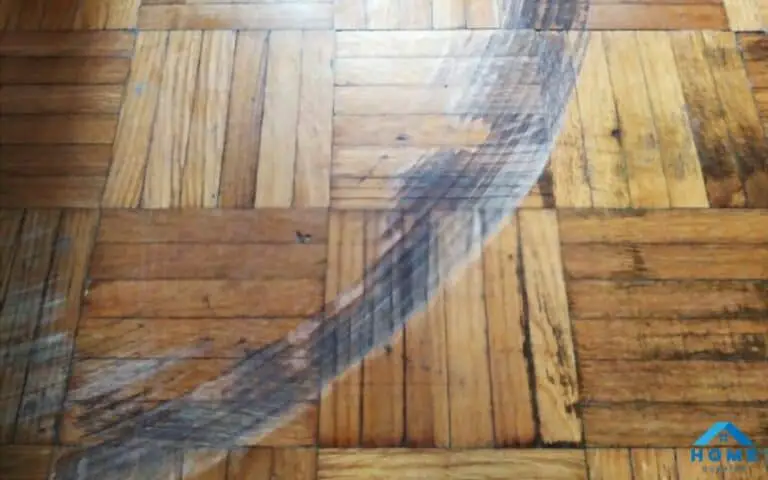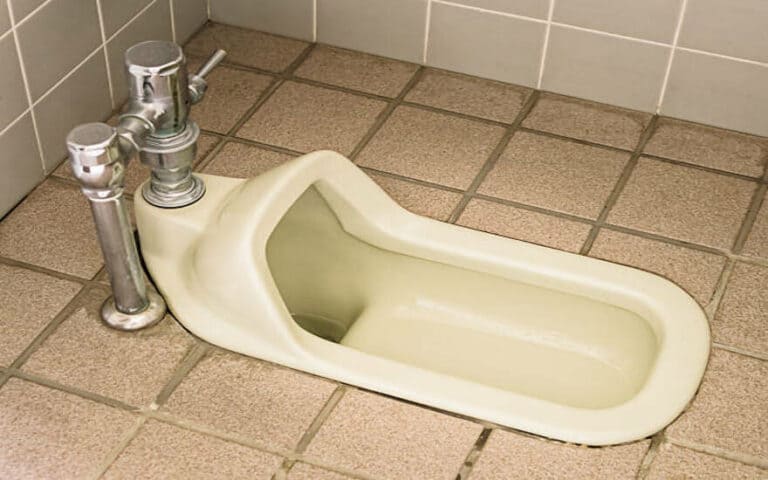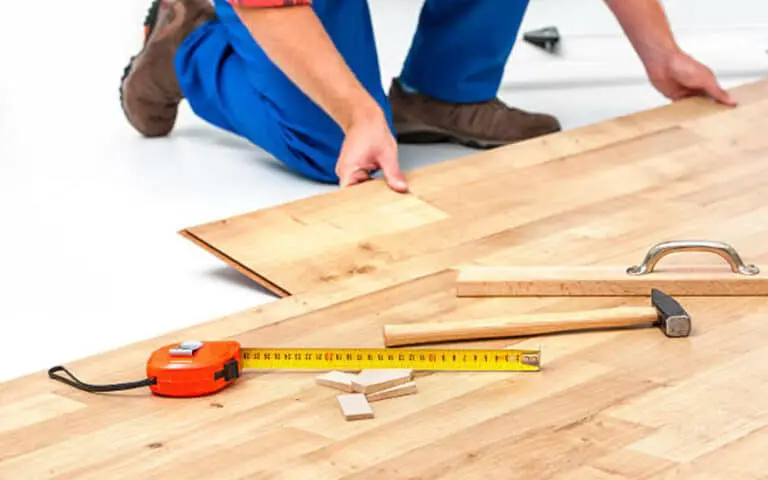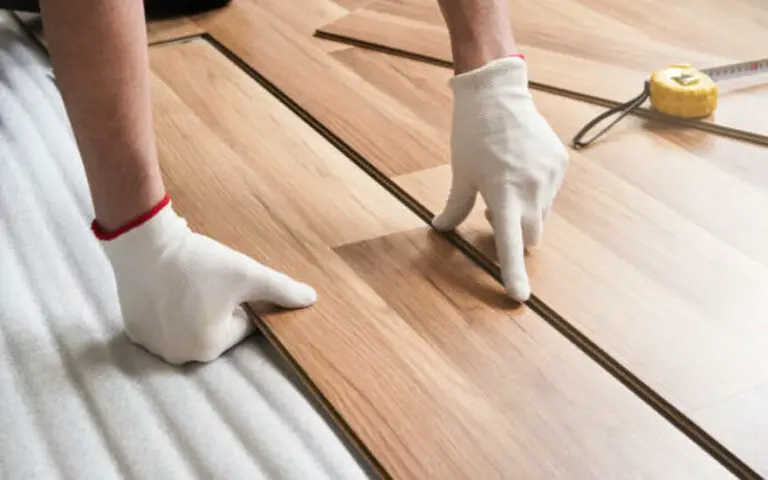Are you considering installing laminate flooring in your home? Before you invest, it’s important to be aware of the common problems associated with this type of flooring. This blog post will examine some of the most common issues with laminate floors so you can make an informed decision.
13 common problems with laminate flooring
If you’re considering installing laminate flooring in your home, you should be aware of the common problems that can arise. Laminate flooring is a great option for many reasons, but if it needs to be installed correctly or exposed to excessive moisture, it can cause various issues.
From expansion and contraction to water damage, scratches and dents, peeling edges, and poor-quality underlayment, it’s important to understand these 13 common problems with laminate flooring before you begin your project.
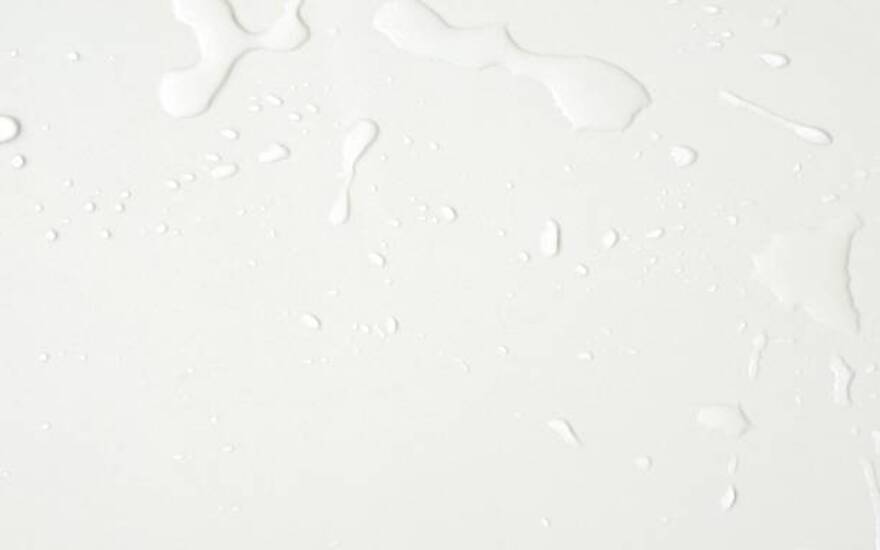
1. Expansion and Contraction
Changes in temperature and humidity levels can cause the expansion and contraction of laminate flooring. This can cause the planks to expand and contract, buckling or warping the floor. It is necessary to make sure that your laminate flooring is installed correctly and that the room is properly insulated and has adequate ventilation.
Additionally, you should never wet mop your laminate flooring as this can cause water to seep into the cracks between planks and cause further damage.
2. Water Damage
Water damage is one of the most familiar problems with laminate flooring. Too much water seeping into the cracks between the planks causes swelling and damage. High moisture levels can lead to peaked and swollen seams, tenting, and cupping.
Uneven subfloors, poor-quality underlayment, and incorrect humidity levels can also cause water damage to laminate floors. It’s important to monitor your home’s humidity levels and ensure your subfloor is stable.
3. Scratches and Dents
Scratches and dents are other common problems with laminate flooring. Even the most careful homeowner will have accidental damage to their laminate floors. Whether it’s from furniture, pets, or children, this can cause serious damage to the surface of your laminate floors.
These types of damage can be fixed fairly easily with a little work and sandpaper. However, it’s always best to try and prevent these problems in the first place by using furniture pads and hardwood floor protectors.
4. Peeling Edges
In addition to expansion and contraction, peeling edges are another common problem with laminate flooring. If the adhesive has become too weak, the edges of the planks will start to lift and peel away.
To prevent this from happening, you should make sure to keep your laminate flooring dry and use a sealant if necessary. Additionally, you should regularly check for any warping or peeling edges and take care of them before they worsen.
5. Poor Quality Underlayment
One of the most common problems with laminate flooring is poor-quality underlayment. When installing laminate flooring, it’s important to use the proper underlayment. Poor quality underlayment can cause the flooring to buckle, squeak, and expand or contract.
It can also lead to uneven making, make the floor difficult to affect, and affect its overall durability and lifespan. This is it’s important to make sure you use t type of underlayment when installing your laminate floor.
6. Unstable Subfloor
Another common problem with laminate flooring is an uneven subfloor. If the subfloor is level or even, it can prevent the laminate from shifting and becoming unsteady.
It can also cause warping, cupping, or buckling. It’s impensure to ensure that your subfloor is level even before installing laminate flooring, as this l help prevent any future.
7. Accidental Damage
Accidental damage, such as dropping a heavy object or spilling something on the floor, can cause problems with laminate flooring. If the object is heavy enough, it can cause a dent in the floor. Spills can seep into the floor and cause staining or warping.
To avoid these, clean up immediately and avoid dropping heavy objects on your laminate flooring. Additionally, take care when moving furniture or appliances, as these can scratch or dent the floor if dragged across.
8. Poor Installation
Another common problem with laminate flooring is poor installation. Poor installation can cause the floor to not be level, which can cause buckling and warping, and gaps between boards.
Poor installation can also lead to squeaking, which can be difficult to fix. It is important to hire a professional when installing laminate flooring to ensure it is done correctly and the correct materials are used.
9. Warping
Warping is another common problem that can occur with laminate flooring. If the installation is done correctly, the laminate planks can avoid being misaligned and causing warping. Warping can also happen due to too much heat and humidity, which can cause the planks to expand and contract.
To avoid warping, hire a professional to properly install your laminate flooring, and use a humidifier in rooms where you have laminate flooring.
10. Poor Quality Laminate Flooring
When it comes to problems with laminate flooring, one of the most common is poor-quality laminate. This can mean the planks must be properly sealed and have a protective top layer. This can lead to bubbling, warping, and fading of colors over time.
11. Gaps Between the Boards
Gaps between the boards can be a common problem with laminate flooring. This can be caused by humidity that causes the laminate planks to expand and contract, resulting in gaps between the boards. It can also be caused by poor installation, such as not using the right amount of spacers between the planks.
Another common cause of gaps is an uneven subfloor or when the subfloor needs to be properly sealed before the laminate is laid. It’s important to ensure that the subfloor is properly sealed and that there are enough spacers between each plank when installing laminate flooring.
12. Sunlight Damage
Another common issue that homeowners have with laminate flooring is damage from sunlight. Just like wood, too much exposure to UV rays can cause discoloration and fading. To prevent this, you should use blinds or curtains to keep direct sunlight from hitting the floors.
You can also apply a UV-resistant sealant to the floors to protect them from the sun’s rays. Taking these precautions can help keep your laminate floors looking new for years to come.
13. Fading of Colors
Too much direct sunlight can cause the colors of the laminate flooring to fade or alter over time. To prevent this, install window coverings, rugs, or furniture to reduce direct sunlight exposure on the flooring. A laminate flooring sealant can help protect against fading and wear and tear.
Summary
Laminate flooring can be a great option for any home. However, it is important to know the potential problems of installing laminate flooring. From expansion and contraction due to moisture to scratches and dents, various common problems are associated with laminate flooring.
There are also potential issues due to poor installation, subfloor instability, and quality underlayment. With the right care and maintenance, laminate flooring can last many years.

